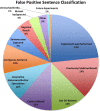Overview of the gene ontology task at BioCreative IV
- PMID: 25157073
- PMCID: PMC4142793
- DOI: 10.1093/database/bau086
Overview of the gene ontology task at BioCreative IV
Abstract
Gene ontology (GO) annotation is a common task among model organism databases (MODs) for capturing gene function data from journal articles. It is a time-consuming and labor-intensive task, and is thus often considered as one of the bottlenecks in literature curation. There is a growing need for semiautomated or fully automated GO curation techniques that will help database curators to rapidly and accurately identify gene function information in full-length articles. Despite multiple attempts in the past, few studies have proven to be useful with regard to assisting real-world GO curation. The shortage of sentence-level training data and opportunities for interaction between text-mining developers and GO curators has limited the advances in algorithm development and corresponding use in practical circumstances. To this end, we organized a text-mining challenge task for literature-based GO annotation in BioCreative IV. More specifically, we developed two subtasks: (i) to automatically locate text passages that contain GO-relevant information (a text retrieval task) and (ii) to automatically identify relevant GO terms for the genes in a given article (a concept-recognition task). With the support from five MODs, we provided teams with >4000 unique text passages that served as the basis for each GO annotation in our task data. Such evidence text information has long been recognized as critical for text-mining algorithm development but was never made available because of the high cost of curation. In total, seven teams participated in the challenge task. From the team results, we conclude that the state of the art in automatically mining GO terms from literature has improved over the past decade while much progress is still needed for computer-assisted GO curation. Future work should focus on addressing remaining technical challenges for improved performance of automatic GO concept recognition and incorporating practical benefits of text-mining tools into real-world GO annotation.
Database url: http://www.biocreative.org/tasks/biocreative-iv/track-4-GO/.
Published by Oxford University Press 2014. This work is written by US Government employees and is in the public domain in the US.
Figures
References
-
- Ochs M.F., Peterson A.J., Kossenkov A., et al. (2007) Incorporation of gene ontology annotations to enhance microarray data analysis. Methods Mol. Biol., 377, 243–254 - PubMed
Publication types
MeSH terms
Grants and funding
LinkOut - more resources
Full Text Sources
Other Literature Sources
Miscellaneous


